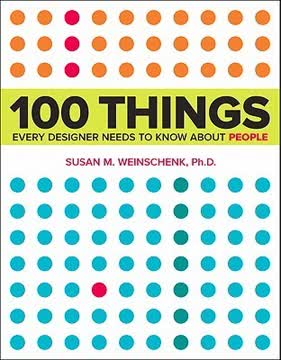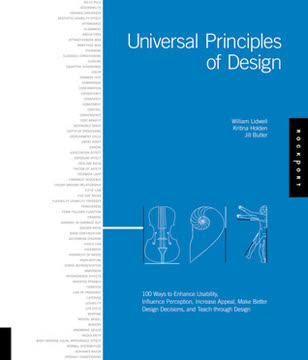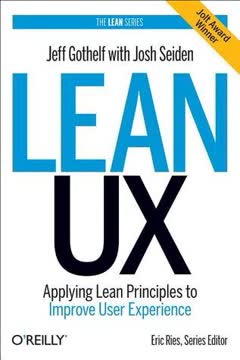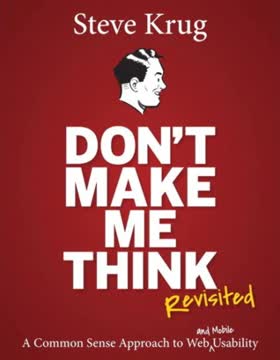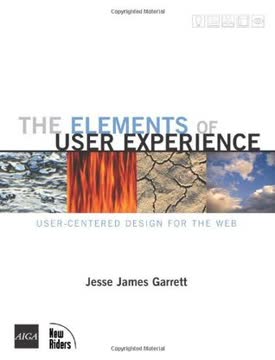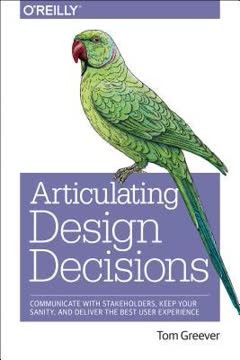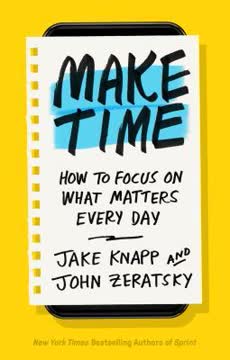重点摘要
1. 定义明确的长期目标并确定冲刺问题
“我们为什么要做这个项目?我们希望在六个月、一年甚至五年后达到什么目标?”
设定雄心勃勃的目标。 开始冲刺时,定义一个明确的长期目标,反映团队的原则和愿望。这个目标将成为指引,确保每个人在整个冲刺过程中朝着同一个方向前进。不要担心目标过高;冲刺过程将帮助你找到一个好的起点,并朝着最大的目标取得实际进展。
确定关键问题。 设定目标后,列出代表未知数和潜在风险的冲刺问题,这些问题是团队与长期目标之间的障碍。这些问题将指导你在冲刺中的解决方案和决策,提供一个准检查表,供你在周五测试后参考和评估。冲刺问题的例子:
- 我们能向从未尝试过我们产品的人解释清楚吗?
- 客户会信任我们的专业知识吗?
- 我们能在团队加入之前帮助个人了解我们的产品吗?
2. 绘制挑战地图并选择目标
“就像吉恩·克兰兹和他返回地球的图表一样,你和你的团队将列出基本内容:你的长期目标和必须回答的难题。”
创建视觉地图。 画一个简单的图表,表示客户通过你的产品或服务的旅程。这个地图应包括:
- 左侧的关键角色(客户、员工等)
- 右侧的结束(目标达成)
- 中间的5-15个步骤,显示客户如何与产品互动
选择目标。 创建地图后,决策者(通常是CEO或项目负责人)应选择一个目标客户和地图上的一个目标事件。这个决定将成为接下来冲刺的重点——草图、原型和测试都将围绕这个选择展开。
3. 单独绘制竞争性解决方案
“集体头脑风暴是有缺陷的,但有更好的方法。”
独立工作。 取代传统的集体头脑风暴,让团队成员独立开发解决方案。这种方法允许深入思考,并在没有群体思维的情况下产生多样化的想法。四步草图过程包括:
- 笔记(20分钟):回顾现有信息并做笔记。
- 想法(20分钟):写下粗略的想法并圈出最有前途的。
- 疯狂8(8分钟):快速绘制你最佳想法的八种变体。
- 解决方案草图(30-90分钟):创建一个三面板故事板,展示你最强的解决方案。
接受不完美。 记住艺术技能并不重要;任何人都可以用简单的形状、火柴人和文字绘制出伟大的解决方案。重点应放在清晰地传达想法和创造性地解决问题上。
4. 在没有冗长辩论的情况下做出明智决策
“冲刺赋予我们的初创公司一种超能力:他们可以快进到未来,看到完成的产品和客户反应,然后再做出任何昂贵的承诺。”
使用结构化决策。 为了避免无休止的辩论并做出高效决策,遵循五步“粘性决策”过程:
- 艺术博物馆:将解决方案草图展示在墙上。
- 热图:默默地审查并用点贴纸标记有趣的部分。
- 快速评论:快速讨论每个解决方案的亮点。
- 草票:每个人投票选出自己最喜欢的解决方案。
- 超级投票:决策者做出最终选择。
信任决策者。 虽然团队的意见很有价值,但最终的决策权应归于决策者。这确保了明确的方向并防止决策瘫痪。如果有多个强有力且相互冲突的想法,可以考虑在“对决”中原型化它们,与客户进行头对头测试。
5. 在一天内创建一个现实的原型
“假装它。”
采用原型心态。 为了在一天内构建一个现实的原型,接受这些原则:
- 你可以原型化任何东西
- 原型是一次性的
- 只构建足够学习的内容,不要更多
- 原型必须看起来真实
关注外观。 创建一个“恰到好处质量”的原型,足够真实以引发客户的真实反应,但不那么精致以至于需要太长时间构建。使用允许快速原型化的工具,如Keynote或PowerPoint用于数字产品,或修改现有物品用于物理产品。
分工合作。 分配团队成员的角色:
- 制作者:创建单个组件
- 拼接者:无缝组合组件
- 撰写者:撰写真实的文本和内容
- 资产收集者:收集必要的材料
- 采访者:准备客户采访
6. 与目标客户测试以获得宝贵见解
“五是神奇的数字。”
进行五次采访。 仅与五个精心挑选的目标客户进行测试就足以识别最重要的模式和见解。这种方法在效率和有价值的学习之间取得平衡。使用五步采访格式结构每次采访:
- 友好的欢迎
- 背景问题
- 介绍原型
- 任务和提示
- 快速总结
一起观察。 让整个冲刺团队一起观看采访,使用便签纸做笔记。这种协作观察允许立即识别模式并防止结果的误解。使用一个简单的网格来组织笔记,每列代表一个客户,每行代表原型的不同方面。
7. 根据客户反馈学习并计划下一步
“每次都是赢家。”
识别模式。 采访结束后,团队一起回顾收集的笔记。寻找在多个客户中出现的模式,特别注意强烈的反应(正面或负面)。将这些模式和见解分类,看看它们如何与冲刺问题和长期目标相关。
确定下一步。 根据收集的模式和见解,决定下一步行动。可能的结果包括:
- 高效失败:发现解决方案不起作用,节省时间和资源
- 有缺陷的成功:识别需要改进的有前途的方向
- 明确的赢家:确认一个准备实施的成功解决方案
记住,每次冲刺结果都提供有价值的学习,无论是验证想法、发现隐藏问题还是揭示新机会。利用这些信息指导未来的努力并改进你的产品或服务。
最后更新日期:
FAQ
What's "Sprint: How to Solve Big Problems and Test New Ideas in Just Five Days" about?
- Overview: "Sprint" by Jake Knapp, John Zeratsky, and Braden Kowitz is a guide to solving big problems and testing new ideas in just five days. It outlines a structured process developed at Google Ventures.
- Purpose: The book aims to help teams quickly move from idea to prototype, allowing them to test and learn from real-world feedback without extensive time or resource investment.
- Structure: The sprint process is broken down into five days, each with specific tasks and goals, from understanding the problem to testing a prototype with real users.
- Audience: It's designed for teams in startups, large companies, and even educational settings who need a fast, efficient way to innovate and make decisions.
Why should I read "Sprint"?
- Efficiency: The book offers a proven method to accelerate decision-making and innovation, which is valuable for anyone facing tight deadlines or resource constraints.
- Practicality: It provides a step-by-step guide that can be applied to a wide range of challenges, making it a versatile tool for problem-solving.
- Real-world Examples: The authors share numerous case studies from their experiences at Google Ventures, illustrating the effectiveness of the sprint process.
- Team Collaboration: It emphasizes the importance of diverse team input and structured collaboration, which can improve team dynamics and outcomes.
What are the key takeaways of "Sprint"?
- Structured Process: The sprint is a five-day process that includes understanding the problem, sketching solutions, deciding on the best ideas, prototyping, and testing with users.
- Focus on Prototyping: The book stresses the importance of creating a realistic prototype quickly to gather user feedback and make informed decisions.
- Team Dynamics: It highlights the value of having a diverse team and a clear decision-maker to guide the process and ensure progress.
- Learning from Users: Testing with real users is crucial to validate ideas and uncover insights that can guide future development.
How does the sprint process work in "Sprint"?
- Day 1 - Understand: The team sets a long-term goal, maps the problem, and gathers insights from experts to identify key questions.
- Day 2 - Sketch: Team members work individually to sketch solutions, drawing on existing ideas and inspiration.
- Day 3 - Decide: The team reviews sketches, votes on the best ideas, and creates a storyboard for the prototype.
- Day 4 - Prototype: A realistic prototype is built quickly, focusing on creating a façade that appears real to users.
- Day 5 - Test: The prototype is tested with real users, and the team observes and learns from their reactions to inform next steps.
What is the "prototype mindset" in "Sprint"?
- Disposable Prototypes: Prototypes should be built quickly and be disposable, focusing on learning rather than perfection.
- Realistic Appearance: The prototype must appear real to users to elicit genuine reactions and feedback.
- Focus on Learning: The goal is to learn as much as possible from user interactions, not to create a finished product.
- Optimism and Resourcefulness: Teams should believe they can prototype anything and be resourceful in finding ways to simulate the final product.
How do you decide on the best ideas in "Sprint"?
- Heat Map Voting: Team members silently review sketches and use dot stickers to vote on the most promising parts of each idea.
- Speed Critique: The team discusses the highlights of each sketch, focusing on areas with the most votes.
- Straw Poll: Each team member votes for their favorite idea, providing input for the final decision.
- Supervote: The Decider makes the final call, using their judgment and the team's input to choose the ideas to prototype.
What role do team dynamics play in "Sprint"?
- Diverse Team: A mix of skills and perspectives is crucial for generating a wide range of ideas and solutions.
- Decider's Role: The Decider is responsible for making final decisions, ensuring the team stays focused and aligned.
- Facilitator's Role: The Facilitator manages the process, keeps the team on track, and ensures productive discussions.
- Collaboration and Independence: While collaboration is key, the process also emphasizes individual work to avoid groupthink and encourage diverse solutions.
How do you test prototypes with users in "Sprint"?
- Five-Act Interview: The interview is structured into five acts: a friendly welcome, context questions, prototype introduction, tasks and nudges, and a quick debrief.
- Think Aloud: Users are encouraged to think aloud as they interact with the prototype, providing insights into their thoughts and reactions.
- Observe Patterns: The team watches the interviews together, taking notes and looking for patterns in user feedback.
- Iterate Based on Feedback: The insights gathered from user testing inform the next steps, whether it's refining the prototype or pivoting to a new idea.
What are some real-world examples from "Sprint"?
- Slack: The book details how Slack used the sprint process to refine their product explanation for non-tech customers, leading to significant improvements.
- Blue Bottle Coffee: The team used a sprint to develop an online store that effectively conveyed their brand's quality and expertise.
- Savioke: The sprint helped Savioke develop a friendly robot personality that enhanced guest experiences in hotels.
- FitStar: The process was used to clarify the value proposition of a fitness app, leading to better user understanding and engagement.
What are the best quotes from "Sprint" and what do they mean?
- "Start at the end." This quote emphasizes the importance of defining a clear long-term goal and working backward to identify the steps needed to achieve it.
- "You can prototype anything." It highlights the book's core belief that with the right mindset and tools, any idea can be quickly turned into a testable prototype.
- "Work alone together." This phrase captures the balance between individual creativity and team collaboration, which is central to the sprint process.
- "The prototype must appear real." It underscores the necessity of creating a realistic façade to gather genuine user feedback.
How can "Sprint" be applied in different contexts?
- Startups: The sprint process is ideal for startups needing to quickly validate ideas and make informed decisions with limited resources.
- Large Companies: It can help large organizations innovate and solve complex problems by fostering a focused, collaborative environment.
- Education: Educators can use sprints to teach problem-solving and design thinking, as demonstrated by examples from universities and high schools.
- Nonprofits and Government: The process can be adapted to address challenges in these sectors, helping teams develop and test solutions efficiently.
What are some common challenges when implementing "Sprint"?
- Time Commitment: Clearing five full days for a sprint can be challenging, especially in larger organizations with busy schedules.
- Decider's Involvement: Ensuring the Decider is present and engaged throughout the sprint is crucial for making effective decisions.
- Prototyping Skills: Teams may need to learn new tools and techniques to create realistic prototypes quickly.
- User Recruitment: Finding and scheduling the right users for testing can be time-consuming but is essential for meaningful feedback.
评论
《冲刺》因其对快速原型设计和问题解决的实用方法而获得了大多数积极评价。读者们赞赏书中清晰的逐步指导和真实案例。许多人发现书中的技术对各种行业和团队规模都很有用。一些人批评其缺乏原创性,指出与现有方法论的相似之处。还有人认为内容可以更简洁。总体而言,评论者重视书中可操作的见解及其加速创新的潜力,尽管有些人质疑其更广泛的适用性或分析的深度。
Similar Books

